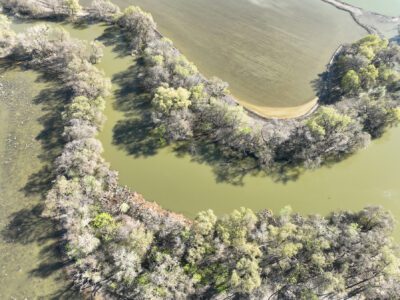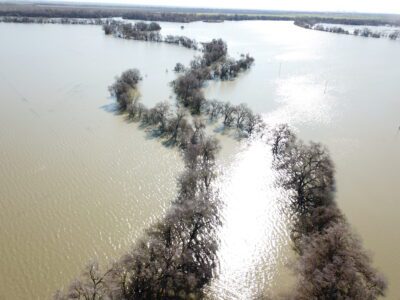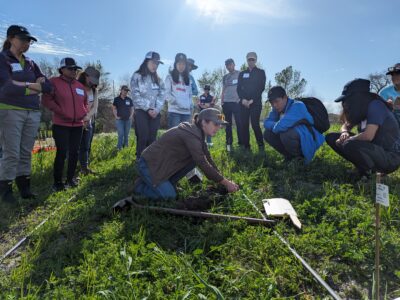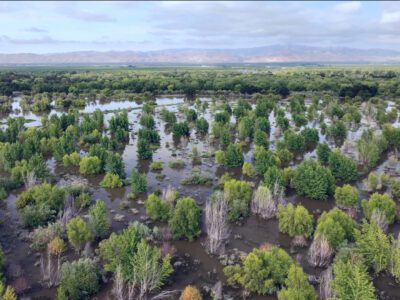The riparian brush rabbit is small, modest, and undeniably cute. It is also one of California’s most endangered mammals. Thanks to dedicated efforts in the San Joaquin Valley, it now has a chance at recovery.
Two decades ago, the future of the species seemed bleak. Populations were reduced to just 200 to 300 individuals living in a tiny fraction of the brush rabbit’s former range in the Central Valley. In the early 2000s, River Partners partnered with the U.S. Fish and Wildlife Service (USFWS) at San Joaquin River National Wildlife Refuge to restore habitat and preserve a population at the refuge. In 2014, we also began to build habitat for the rabbits into our restoration of Dos Rios Ranch Preserve on the opposite side of the river, reconnecting additional fragments of remnant ecosystem, and making it possible for the species to expand its range over time.
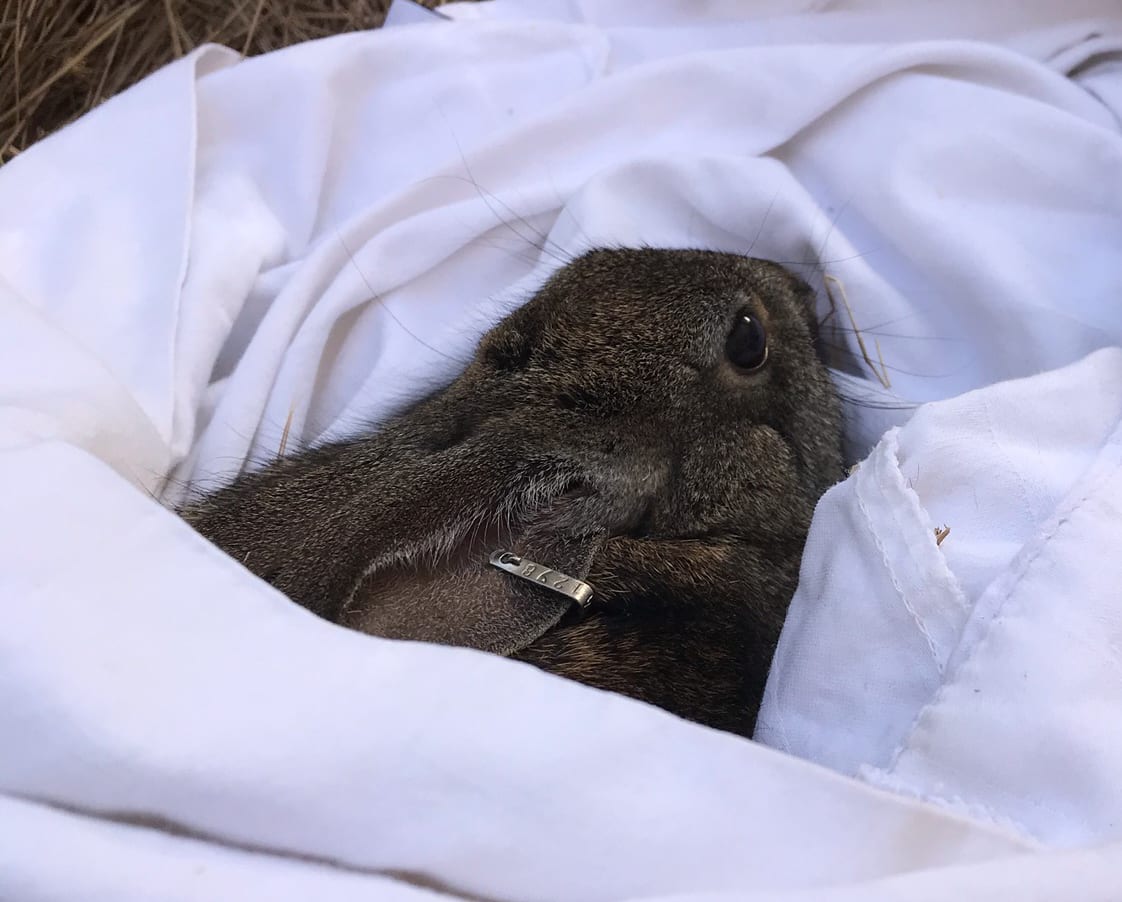
River Partners planned to translocate a small population of riparian brush rabbits from the San Joaquin River National Wildlife Refuge to Dos Rios Ranch, but the rabbits found the new habitat without any human assistance. In September of 2020, we were elated to find images of riparian brush rabbits on 60 percent of the camera traps we installed at Dos Rios Ranch. Riparian brush rabbits typically stick to a small range of between 2 1/2 and 5 acres, so their presence on so many camera trap images suggested a robust population.
“When I did the original population estimate for Dos Rios I estimated somewhere between 100 and 150 rabbits,” says Restoration Ecologist Haley Mirts. “But we trapped a lot more rabbits than we thought we would based on that estimate, so I think it’s actually quite a bit more than that, probably a couple hundred to 300 or so by conservative estimates.” When combined with the 2,000 or so individuals living in the San Joaquin River National Wildlife Refuge, these numbers are very encouraging.
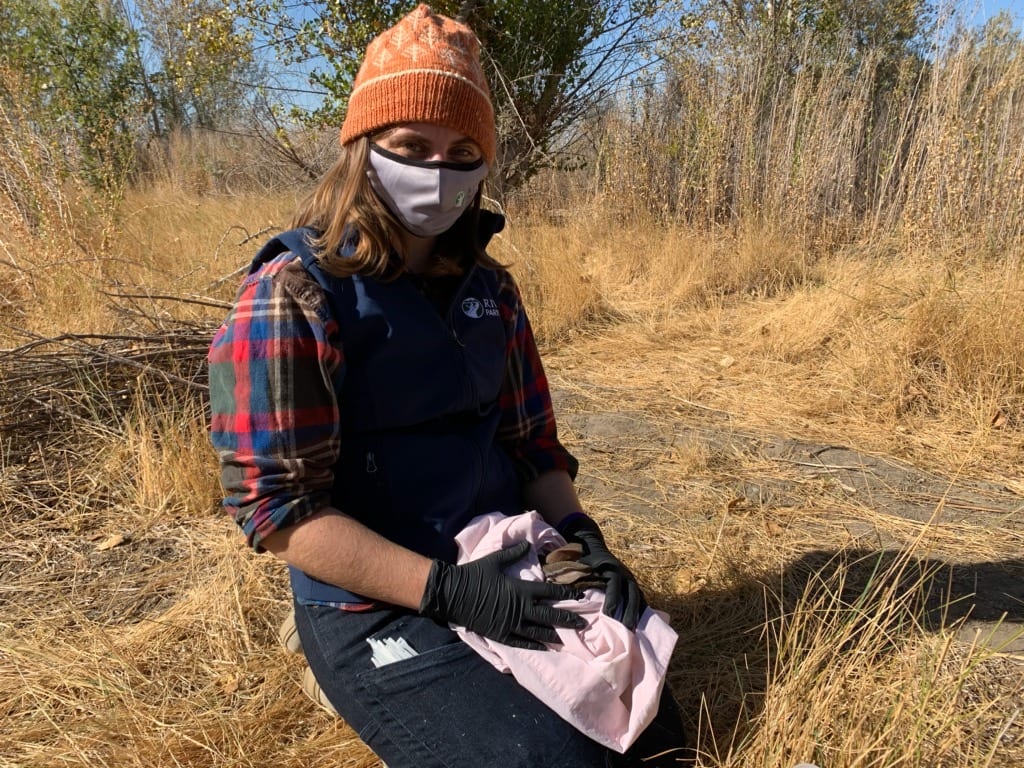
Led by USFWS, River Partners and our partners trapped and tagged a total of 252 riparian brush rabbits in the San Joaquin Valley between August and November of 2020, including a number of individuals living at Dos Rios Ranch. Biologists weighed, sexed, and measured each rabbit, and took genetic samples.
“Some of the most valuable information we have is that genetic information,” says River Partners Biologist Asia Jones, who helped trap and tag rabbits at Dos Rios. “We can use that information to determine how genetically different the species is. You want a lot of genetic diversity so these different mutations can arise to protect species from viruses and other threats.” Data we collected during this effort will also help us understand the rabbit’s breeding habits and distribution.
Because riparian brush rabbits are an endangered species, trapping and tagging activities were conducted under the supervision of veterinarians. The rabbits were handled in cotton bags to keep them calm, and to prevent disorientation they were released in the same location where they were trapped. “The rabbits are the size of your hand, if not smaller,” says Jones. “They’re very small. These guys are more fragile than your domestic rabbit, so you have to handle them carefully. I have years of domestic rabbit handling experience, and none of that helped me. It’s a whole different skill.”
River Partners biologist Asia Jones releases a riparian brush rabbit at Dos Rios Ranch.
The riparian brush rabbit has always been vulnerable to predation and major flood events, but today the species faces a new threat. Rabbit Hemorrhagic Disease (RHD) has so far been identified in a handful of wild rabbits and hares in Southern California, but the highly contagious nature of the disease combined with its high mortality rate (up to 90%) means it has the potential to decimate the rebounding population of riparian brush rabbits, should it continue to move north.
California’s first case of RHD was identified in May of 2020 in a wild jackrabbit in Palm Springs. Since then, the disease has been gradually moving north. The virus is especially insidious because birds and other wild animals can carry it on their feet, and it can survive outside of a host animal for months. Rabbits can become infected by drinking or eating contaminated water or food, by direct contact with infected animals, or by contact with a contaminated surface. Rabbits may show symptoms before succumbing, or they may die suddenly. Vaccinating riparian brush rabbits against this disease is one of our partnership’s ongoing goals — each rabbit we trapped and tagged in the summer and fall of 2020 also received an RHD vaccine.
The rabbits were vaccinated with the assistance of staff from USFWS, the California Department of Fish and Wildlife, and the Oakland Zoo. The zoo also housed the first 20 rabbits to receive the RHD vaccine for an observation period to make sure the animals were free from side effects and ready for release. River Partners and our partners plan to continue vaccinating riparian brush rabbits in 2021.
Vaccinating, restoring habitat and connecting pieces of the rabbit’s existing range remain some of the most promising things we can do to help the riparian brush rabbit. “Dos Rios is a piece of the puzzle,” says Mirts. “We’re starting to piece together this contiguous strip of land that the rabbits can use, and that’s how we can give them the best chance at recovery.”
This River Partners LifeLines Webinar (below) provides a short history of the riparian brush rabbit in California and our hands-on work to protect the species on restoration sites along the San Joaquin River. Special thanks to CDFW and The Volgenau Foundation for their partnership.
For more information about local efforts to vaccinate Riparian Brush Rabbits, visit The U.S. Fish and Wildlife Service.
River Partners LifeLines – Episode 2 from River Partners on Vimeo.

